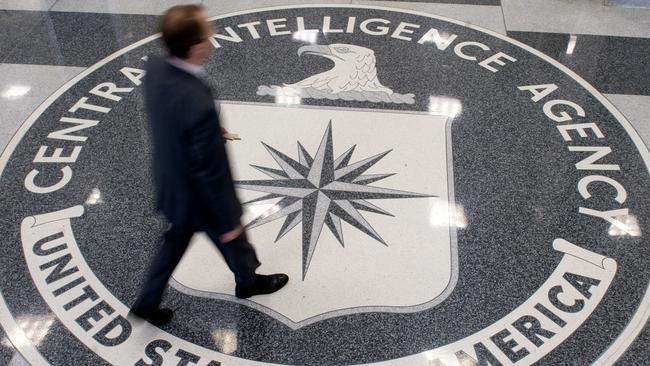Is a super-mole betraying the CIA’s spies?

MI6 experienced this horror in the 1940s and 50s, when Kim Philby, one of its most senior officers, passed to the KGB the names of numerous assets working for Western intelligence. Scores, and perhaps hundreds, of people were liquidated. The Soviet intelligence services went through a similar experience in the 70s, when its agents in Scandinavia were exposed by a senior KGB officer secretly working for MI6.
The same alarm is now rippling through the ranks of the CIA, because its spies and informants around the world have been mysteriously evaporating. A leaked top-secret CIA cable has revealed that in recent times “dozens” of the agency’s informants in hostile countries have been compromised, then captured, arrested or killed. Counter-intelligence agencies in China, Russia, Iran and Pakistan have been successfully hunting down America’s spies at an alarming rate.
In an age of ever-expanding cyber-espionage, the bedrock of spying remains human intelligence (or humint): individuals willing to reveal the secrets of their own countries, often at huge personal risk. The CIA is better at recruiting such spies than any other agency, largely because it can afford to pay them lavishly: in 2013, the last time figures were released, the CIA spent $US2.3bn on humint.
The leaked memo, sent to every CIA station, offered several explanations for the troubling rise in compromised spies, including poor tradecraft (techniques for handling informants) and over-eager recruitment. Technological advances including facial recognition, artificial intelligence and hacking have made it easier for rival agencies to track CIA officers when contacting sources.
But there is another potential explanation for the growing death toll among America’s spies, a possibility that haunts every intelligence agency and one the CIA is loath even to contemplate: the agency may have a mole, someone inside the organisation betraying its spies to the enemy. And since the informants appear to be vanishing in different adversarial countries at the same time rather than a single geographical area, there may be more than one; or a single senior official with access to the CIA’s humint files.
For reasons of both pride and history, the CIA is notoriously unwilling to address the possibility of internal betrayal. James Jesus Angleton, the cadaverous, orchid-collecting CIA chief of counterintelligence from 1954 to 1974, became convinced that the agency was riddled with high-ranking moles after the defection of Philby, who had been a close friend.
Angleton’s internal investigations came close to destroying the agency from within. Some 40 CIA employees were investigated during his reign, and 14 were considered highly suspect. Most (and probably all) were innocent, and some were later compensated for the wreckage of their careers in what became known as the “Mole Relief Act”.
Angleton’s witch-hunting left a dangerous legacy in the CIA, including a strong disinclination to see treachery within its ranks. In 1985, Aldrich Ames, a long-serving but disgruntled CIA counterintelligence officer, walked into the Soviet embassy in Washington and offered to spy for the KGB. He was handed $US50,000 in used notes in a plastic bag, the first instalment of $US4.6m in payments over the coming years.
Ames identified at least 10 top-level CIA and FBI sources behind the Iron Curtain, almost all of whom were unmasked and executed. The CIA swiftly realised that its Soviet network was being ripped apart, but was initially reluctant to countenance the possibility of a mole: in a similar response to the current wave of spy-losses, counterintelligence investigators preferred to look for technical explanations, focusing on Soviet eavesdropping and the danger of broken codes.
Ames was finally arrested in 1993, partly on account of his lavish lifestyle: nobody on a CIA salary of $US60,000 could afford to buy Jaguar cars and a new house in cash.
That reluctance to look inside has extended deep into the 21st century. Between 2010 and 2012, the Chinese government in effect destroyed the CIA’s network in China, killing or imprisoning at least 20 agents and crippling American intelligence-gathering there for a decade. One captured spy was shot in the courtyard of a government building in front of his colleagues, a stark warning of the consequences of betrayal.
Investigators were deeply divided over the cause of the disaster. Some suspected an internal mole as soon as Chinese sources started to vanish, but others blamed sloppy tradecraft or argued that the Chinese must have hacked the CIA communications system.
Mark Kelton, the CIA’s top spy-hunter, initially resisted the mole theory and demanded hard evidence of treachery. One of his close friends in the agency had been wrongly suspected of being a double agent during the 1990s – that mole turned out to be the FBI agent Robert Hanssen, who spied for the Soviets for a quarter of a century in what the Department of Justice described as “possibly the worst intelligence disaster in US history”.
Suspicions in the China calamity eventually focused on Jerry Chun Shing Lee, a Hong Kong-born former CIA case officer. In 2019, Lee pleaded guilty to conspiring with Chinese intelligence agents. Prosecutors said he had received payments totalling $US840,000. Lee was sentenced to 19 years in prison, but the case provided no direct evidence that he had supplied classified information leading to the unravelling of the CIA’s China network, leaving the disturbing possibility that the traitor is still uncaught.
And so the CIA finds itself in an agonising state of deja vu: uncertain what has happened to so many of its spies, blaming bad tradecraft and technological wizardry for the losses, and secretly wondering if the colleague at the next desk might be a mole, buried in plain sight.
The Times



The moment of dread for every intelligence service comes when its spies start to disappear: the agents and sources, so carefully recruited and nurtured, often over many years, simply vanish, one after the other.